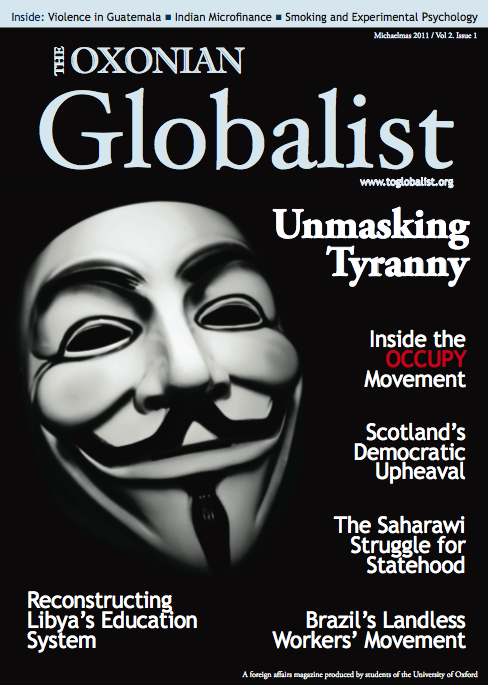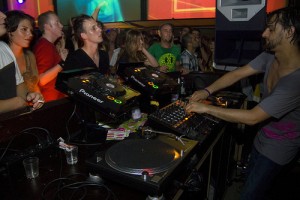Chilean musicians should consider moving to Europe or New York. Claudio Arrau – one of the most celebrated pianists of the 20th century – was born in Chile and received a ten year grant from the government to hone his skills before resettling in New York. A century later, little has changed. Chile’s current crop of world-renowned musicians are not to be found in Santiago, but instead they ply their trade throughout Europe and America.
Ricardo Villalobos is perhaps the most renowned Chilean artist. He moved from Santiago to Germany, aged 3, in order to escape the dictatorship of Augusto Pinochet. His music is influenced by European music, with Depeche Mode cited as an inspiration. Within Europe he has established himself as one of the top DJs in the world, placing sixth in Mixmag’s “DJs of All Time” competition in January while topping Resident Advisor’s “DJ of the Year Competition” in 2008 and 2010. Nonetheless, his minimal techno music does contain Chilean style: according to Mixmag, his mixes have “characteristic South American warmth” and his rhythms are often said to be influenced by his Latin American heritage.
At the same time as achieving international acclaim, Villalobos and his contemporaries have helped to build the electronic music scene back home. Their contributions have included setting up and promoting various music clubs and festivals around Chile. Since the mid-1990s Villalobos, Nicolet and Dandy Jack have inspired Chilean producers to create what is regarded as an engaging style of music that blends electronic music with Latin beats.
Alejandra Iglesias, known as “Dinky”, has been influenced by European artists such as Depeche Mode, Prince and Aphex Twin, before finding success in New York. She has gained popularity in the clubbing scene with her mix of differing musical styles, encompassing house, deep minimal techno, experimental, old school, funk and soul. Her albums “Black Cabaret” and “Maybe Later” furthermore contain a 1980s allure mixed with 1990s techno.
Nicolas Jaar is another Chilean producer who is gaining much acclaim in New York, and his style of music has already reached European audiences. In March he released his first album, “Space Is Only Noise”, on the heels of the momentum garnered by successful releases over the last couple of years. Raised in Santiago, this comparative literature student incorporates elements of house, down-tempo and jazz to create what is considered to be mysterious, unsettling, engaging music. Jaar is creating great excitement amongst music journalists and seems set for an illustrious career.
The music of Felipe Venegas, another Chilean DJ who emerged from the 1990s wave, is also popular in Europe and New York. His “Espiritu” EP is most heavily influenced by his Latin American heritage, with its pan flutes and Aymara percussion feeding into his jazzy techno.
While the electronic scene is where Chile has gained particular renown, it is not the only genre that it has excelled in. Chilean metal is not to be overlooked, with bands such as Mar de Grises and Asunto leading the way in South America. Fans of American tech metal bands like Cynic and Atheist can find much enjoyment in listening to Coprofago. Their albums, “Genesis” and “Unorthodox Creative Criteria”, are deemed excellent productions. Meanwhile, Poema Arcanus have supported grindcore stars Napalm Death and doom metalists Candlemass on tour.
Popular within Chile itself is a brand of the folk-inspired genre Nueva Cancion. This was prominent in the 1960s when Victor Jara was getting under the skin of the Chilean government with his politically assertive message. The contrast between the themes of his songs – love, peace and social justice – and the brutal way in which he was murdered transformed Jara into a symbol of struggle for human rights across Latin America. In modern Chile, the artist Gepe is a fine example of the direction that Chilean folk music is currently taking. He has been described as the new guru of Chilean folk for combining the sensibilities of 1960s and 1970s Chilean folk with a minimalist, electropop sound.
Los Prisioneros are often credited as being the first band to really overthrow the primacy of the Nueva Cancion of the 1960s, following the success of their 1980s brand of power rock. The lead singer, Jorge Gonzales, has become a pop icon for the country and continues to succeed with his new band Los Updates, which has played at clubs around the world. La Ley, who were influenced by Los Prisioneros, have won two Latin American Grammies as well as a world-wide Grammy for the album released of their performance on MTV Unplugged in 2001. The last two La Ley albums, “Uno” and “Libertad”, have established the band as one of Latin America’s leading musical artists.
Although Chile has produced various successful rock and metal bands, it is the electronic style hat has attracted the largest international following. It is widely recognised as a contemporary sound which incorporates beautiful Latin rhythms. Following the successes of Villalobos, Jaar, Dinky and Venegas, Chile appears set to continue producing musicians with the ability and creativity to entertain listeners from around the world.




